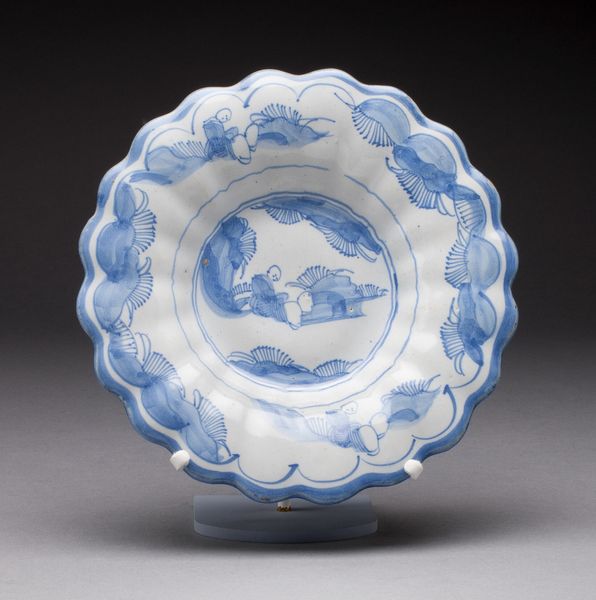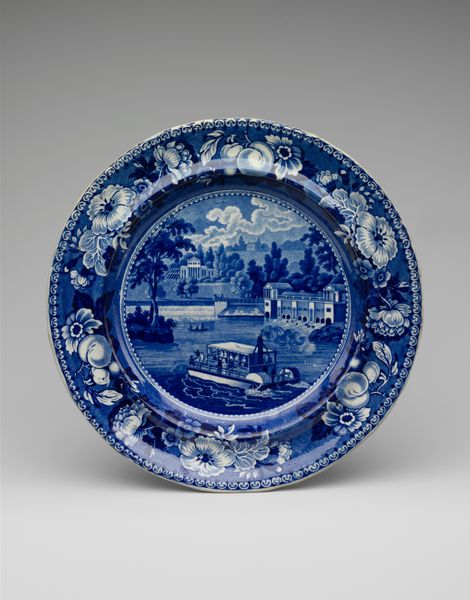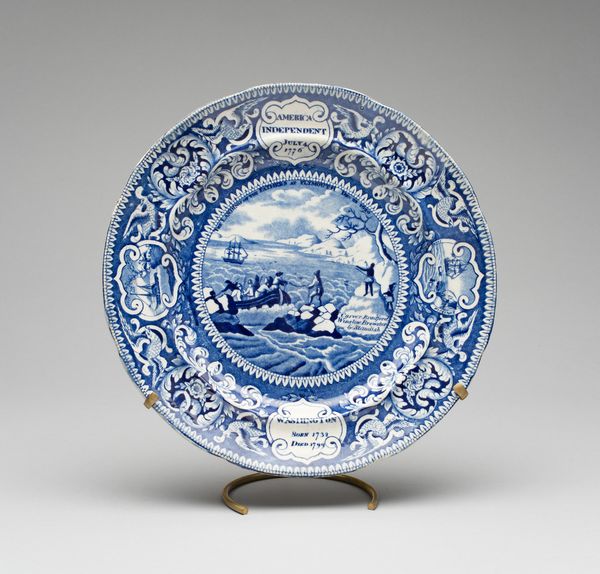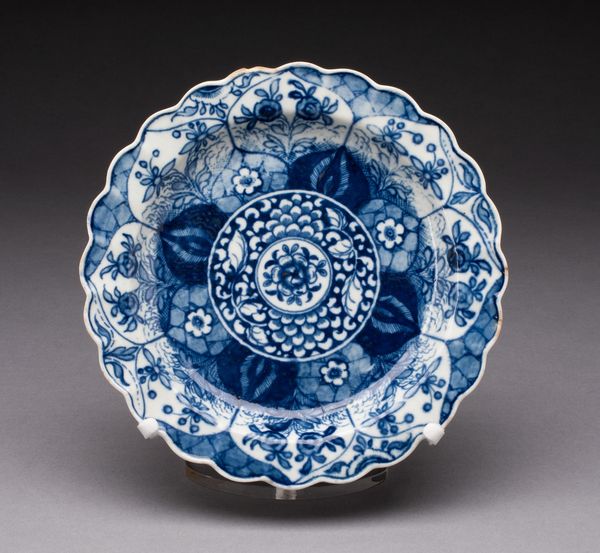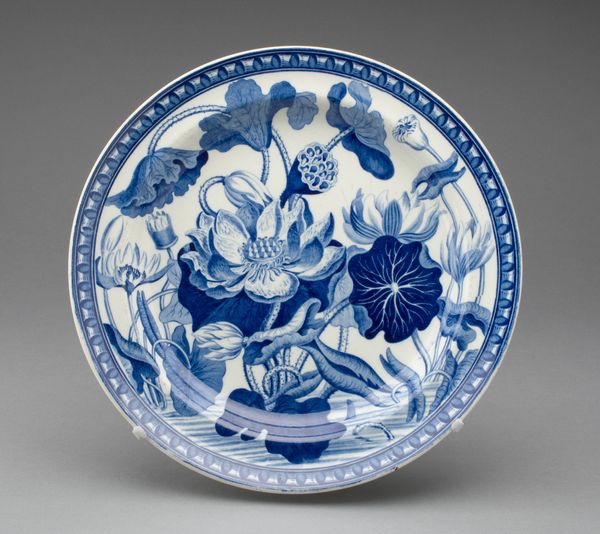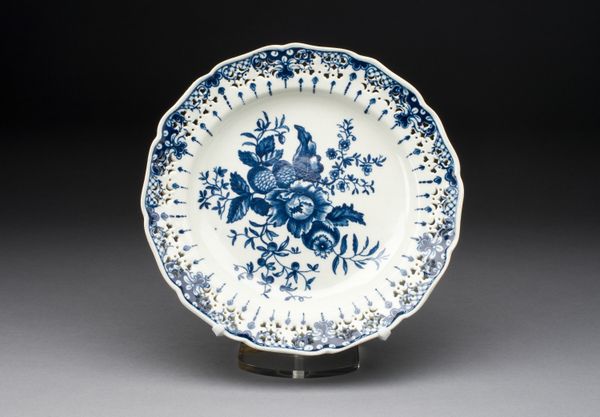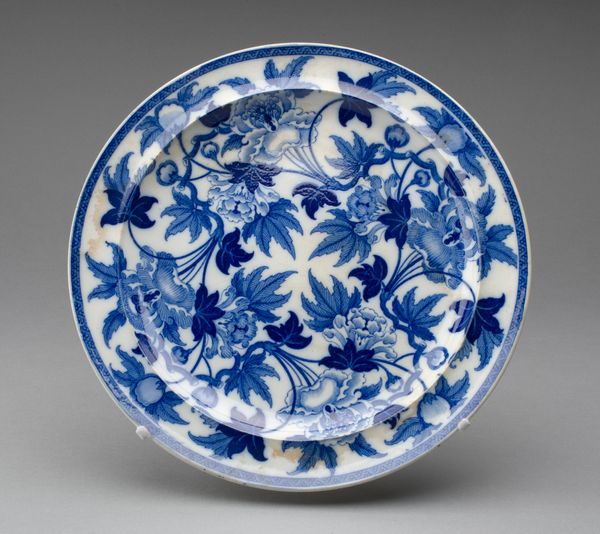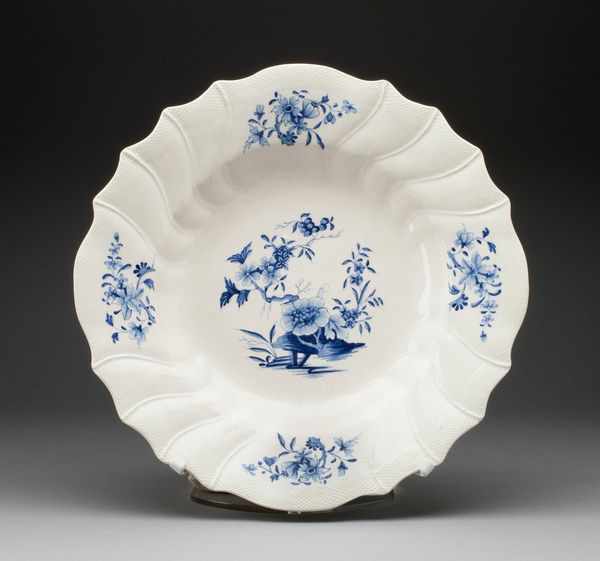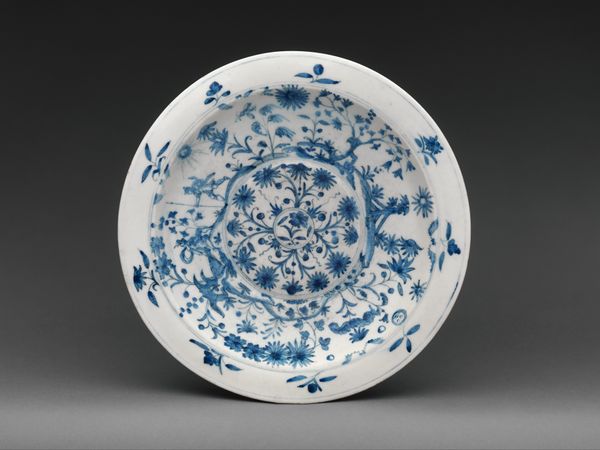
ceramic, porcelain
#
asian-art
#
landscape
#
ceramic
#
porcelain
#
ceramic
#
rococo
Dimensions: Diam. 22.2 cm (8 3/4 in.)
Copyright: Public Domain
Editor: So, this is a porcelain plate made by the Bow Porcelain Factory between 1755 and 1765. It’s beautifully decorated with these blue landscape scenes. I’m struck by the detail. What can you tell me about it? Curator: The plate is a prime example of the material aspirations of the 18th century. Porcelain, originally a closely guarded secret of Asian manufacture, became a coveted commodity. Bow, and factories like it, were built around the specific labour needed to produce these objects for a rising middle class eager to emulate aristocratic taste. Notice how the 'exotic' Asian landscape is itself being industrialized and reproduced. Editor: That’s interesting. So, it wasn't just about aesthetics, but also about the production process? Curator: Exactly. The cobalt oxide used for the blue decoration, the kaolin clay, the fuel for the kilns - all point to global networks of extraction and trade that fuelled these factories. How do you think the plate itself functioned in its original context? Editor: Probably for serving food, but maybe it was more of a decorative status symbol. Curator: Precisely. The very act of possessing and displaying such a plate spoke volumes about one's access to capital and participation in a burgeoning consumer culture. It blurs the line between functional object and a symbol of aspiration, manufactured through a network of human and material resources. Editor: So, looking at it, we should be thinking about labour and materials and class? Curator: Yes, by paying close attention to these plates and their modes of production, distribution and consumption we are better placed to challenge any supposed separation between art and craft, aesthetics and economics. We reveal complex social dynamics embedded within seemingly simple objects. Editor: That makes me see the plate in a completely new way! It's not just pretty; it’s a product of its time, tied to labour and global trade. Curator: Indeed. Material culture offers unique insights into history, when we consider not just what something looks like, but how it came to be.
Comments
No comments
Be the first to comment and join the conversation on the ultimate creative platform.


